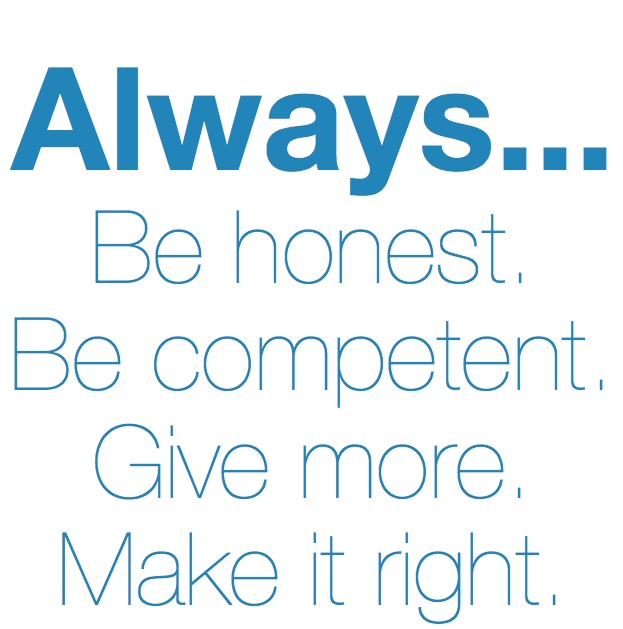276 Leadership & The Stories You Tell
Podcast: Play in new window | Download (44.5MB)
Subscribe: Apple Podcasts | Spotify | RSS | More

Didn’t we all grow up hearing stories? I did.
Parents read stories to us. Teachers did, too. At church we heard preachers tell us stories, too. The Bible has lots of great stories.
Parents, teacher and preachers aren’t the only people in our lives who tell stories though. Leaders do, too. You’re a leader. You tell stories.
That doesn’t mean you’re good at it. Or that your stories are good. Or effective in helping you lead better.
Pay Attention Today
It can be challenging to be in the moment. Leaders are often challenged with pre-occupation. We’ve got a lot of things on our calendar, our mind and our plate. Those are just the things involving our agenda. Then, we’ve got the dozens of small (and large) interruptions. I hear you moaning your approval right now. But wait a minute…
Who or what is the recipient of your leadership?
Hint: it’s always a who. It’s only a what if you’re describing a team, department or organization. People comprise all of those. So, even if you answer with a what, it’s still people.
Sadly, too many leaders allow themselves to become distracted with stuff instead of people. People perform. Leaders lead. That is, leaders help people perform better. When they fail to do that, they fail in their role to lead. But we can go into more detail on that work later. Today, I want to concentrate on one aspect of leadership to helps people perform better – stories.
I started paying attention to stories in the workplace when I was still a teenager. Every boss I ever had told stories. Some didn’t tell good stories. Others didn’t tell the stories very well. But they all told stories. Some kind of stories.
In elementary school I often gauged my affection for my teacher based on her (they were all women) ability to tell or read stories well. I cared about the performance or the ability to read aloud well. I also paid attention to the kind of stories they selected. We’ve all got a preference for certain kinds of stories. My interest, even as a little kid, was mostly sparked by stories that could have been true. Fantasy and sci-fi kind of stuff wasn’t appealing to me as a little kid. It’s still not. For example, my third grade teacher read The Boxcar Children by Gertrude Chandler Warner. That was my kind of story.
When I began to work in businesses, first as a salesperson, I paid careful attention to the stories the boss told. I knew it would give me insight into his values, his concerns, his worldview, his philosophies and anything else that might help me be a better employee. One of my earliest strengths as a salesperson was preparation. I was fanatical about studying the products I was selling. I was bent on knowing more than anybody else about the stereo gear I was selling. It wasn’t an ego-based thing. It was a practical thing designed to give me the biggest edge in selling more products and serving more customers. I knew that if I could teach a customer about a feature that meant a lot to them, then I could make the sale. The salesperson who shows us that one thing that makes all the difference — that’s the salesperson we tend to like the most, and the one most likely to get our money. It was a game for me and the name of the game was “intel.” I wanted my intel (or intelligence) to be superior to anybody else in the market. The boss would tell stories and that would give me intel I could use to be a more valuable employee. Besides, I enjoyed figuring out why certain people told certain stories, or certain kinds of stories.
Selling was – and still is – very story-driven for me. So is coaching. And consulting. I can see a client’s eyes light up with an “Oh-now-I-get-it” moment after I tell a very brief story, or use an illustration (which is really just a micro story) that resonates with them. It happens all the time and I’m constantly searching for that connection because it means I’ve done my work well.
So the boss is always talking about his stuff. His car, his house, his vacation, his family. It’s all about him. All the time. You ever had a boss like that? If you’ve got any experience at all, it’s highly likely. Some bosses are that self-centered. I hope that’s not you, but if it is — Stop It! Get your mind off yourself at work and start thinking about your people.
One of my earliest bosses was like this, but my immediate boss was just the opposite. Thankfully. My immediate boss was a pretty remarkable, attentive guy. The stories he told dealt with merchandise, shoppers and employees. He was quite focused on the merchandise so I knew product knowledge was important to him. He wanted his staff to be among the most knowledgeable salespeople around. I was already bent to increase my intel, including product knowledge, so that wasn’t hard for me. I would sometimes urge fellow employees to stop wasting their downtime in nonsense and to spend it brushing up on their product knowledge so they could perform better. If it’s important to the boss, it better be important to the employees.
Years later I learned that I could employ the same intel strategies to figure anybody out. When you sit down to negotiate with somebody and you have no idea what kind of stories they like to tell, you’re in a less desirable position than if you’ve heard them tell lots of stories. It’s why two of the fundamental things I urge all my clients to do is listen and ask questions. It’s common for me to teach people my personal selling philosophy. There are basically only two selling philosophies, but they’re very opposing in their tactics, viewpoint and implementation.
Selling Philosophy #1
As long as I’m talking, I’m selling.
Selling Philosophy #2
As long as you’re talking, you’re buying.
I’m solidly in the second camp. I don’t have any tolerance for people entrenched in that first camp. If I can’t move somebody from camp #1 to camp #2, then I’ll quit. That’s how important it is to me. That’s how much I believe in the superiority of #2. That first strategy is just too selfish, too.
Even leaders who don’t consider themselves salespeople — every leader is a salesperson (the great leaders are strong salespeople) — employ one of these strategies in their own leadership style. It goes beyond listening and talking. It’s the urge of the leader to employ one more than the other to influence and persuade.
Look at yourself closely. Are you a leader who sits down with somebody – or a group of people – and you hold forth without much interaction or open mind? You think, “The more I talk the more they’ll understand. The more I talk the more they’ll buy in.”
Yes, there are times that a leader needs to hold forth, but not all the time. For example, when a leader is trying to educate a staff on some history that might be relevant, or some decision already reached (and how that decision was reached), then holding forth is educational.
Tell Me Enough Stories, I’ll Tell You Your Story
But let’s consider your storytelling habits as a leader. If I can hear you tell enough stories I can figure out how you roll. I’ll go you one better — even if you’re not a leader, tell me enough stories and I’ll tell you your story. I may not have the details down cold, but I’ll pretty much have you figured out. There’s no magic to it. It’s what’s in our heart comes out in our speech. Our stories reveal us. They can even betray us if we’re trying to pretend to be something we’re not.
Join in a group conversation. Put as many people as you want in the conversation. There can be as few as 2 or as many as you want. Enter a person who always has a story to trump your story, or the other guy’s story. If everybody is standing around, he’s always leaning forward slightly, sometimes on his toes, anxious to speak as soon as there’s a lull in the conversation. Let me watch him and hear him for just a few minutes and I’ll likely be able to tell you quite a lot about him, especially if he’s able to insert himself with enough stories.
The same is true for you, and me and anybody else. It’s especially true of leaders because all leaders have stories to tell. And they tell them. To somebody. Sometime.
I’m not making a distinction between the more quiet leader and the more outgoing one. That’s personality and style. I don’t care about that because there’s not one personality or style most suited for leadership. Effective leaders come in all varieties. Even quiet leaders tell stories. They just may not tell as many, or to as many people. No matter, today’s show still applies.
So you’re looking inside at your own story crafting, right?
Do you have any favorite stories? What are they? What’s their theme?
What about the impromptu stories? You know, the ones that just erupt in every day life at the office?
I’ve sat down and spent hundreds of hours in conversation with a single leader. I’ve also sat down and spent just a handful of hours with a single leader. The first just gives me more opportunities to hear stories. In both cases, I’ve had enough time to hear at least a few stories. It’s like anything else, the more data you have the more valid things become. And the more clear they are.
I’m sitting with a CEO. He’s like most CEO’s, willing to carry the conversation and more than willing to make it about himself. He’s not pompous or arrogant. Just confident and doing what good CEO’s do. Trying to be impressive. He’s not working it too hard. I’m not offended or put off. He’s affable. Even a bit charming. It’s not unattractive.
He recites a business success story. It’s an opportunity he got out of the clear blue. It’s a good story and I give him appropriate feedback bragging on his good fortune. Instantly, he follows it up with another story. Just like the first one, it’s a story about serendipity. A business deal landed in his lap – one he wasn’t looking for, but one that he couldn’t ignore. Again, I compliment him. This continues for a few more stories and after half an hour I have pieced together some common denominators in these stories: a) he’s well known in his space, b) his notoriety in this space brings him unexpected opportunities, c) people offer him deals others would think are too good to be true, but they do it because they know he can bring them more business and d) he’s a smart operator who knows how to take advantage of and make the most of these opportunities.
We talk a bit longer. Not a single story about an employee. No team member’s name or position enters the conversation. Not a single story about a customer either.
Now before you think I’m judging the character of this man, tap the brakes. That’s not the objective of this. The objective is to unearth some intel on his leadership. Just like my boss who had a propensity for product knowledge. It is what it is. I don’t judge it, I just try to deal with it the best way possible.
I engage some employees and listen to their stories. Guess what? They tell stories about the boss. About the deals that come his way. About his prowess to turn a good deal into a great deal. It’s interesting, isn’t it? I go around and find story after story about the boss. And sooner than later it’s clear that the boss is the culture. The organization’s success is built on the art of the deal. And the boss is a king of deals. Again, nothing wrong with it. It is what it is. It’s a culture and leadership is is deal-based.
Why The Stories Matter
Leaders, more so than other employees, can tell the stories they most want to tell. They’ve got a built-in audience that can’t walk out on them. Employees are forced to listen — well, maybe more accurately, they’re forced to sit in silence, giving audience to the boss. But employees tell stories, too. All our stories matter because they reveal some important things.
1. Our stories reveal our values
A single story may not show much, but as leaders we tell lots of stories. The cumulative effect of our stories shows our professional and personal values.
I catch myself telling story after story about the collective failure of leaders, if only occasionally, to serve people who have no idea there’s a problem. For example, a company hires a new employee. It’s a small company that has no HR department. Onboarding isn’t some structured, formal process. It’s mostly done by forcing the new employee to acclimate themselves. It works well enough, but it could be much better.
A few weeks in the new employee unwittingly commits a faux pau in a meeting when he says something that rankles the big boss. As the team is discussing a matter, this newest employee makes a statement in mid-stream, “I don’t know why we do that.” He wasn’t mean-spirited about it. He just blurted it out probably without realizing how it may have sounded, especially as the new kid. Nobody said anything to him, but later the CEO remarked, “Who does he think he is?”
“Did you speak with him about it?” I asked. Nope. He didn’t. But he told me the story about it. It wasn’t the first story like that I had heard from him. This leader – like most leaders – valued “knowing your place.” This newest team member blew it by alerting to the CEO that he had yet to learn his place. I suspect the new employee hadn’t spent enough time hearing the stories to really understand how things roll. Rather than keep silence and take his time figuring it out, this person – with an assertive personality and a sense of proactivity that got him the job – had inadvertently stepped in it. But he didn’t know it. I led the parade for a senior executive to pull him aside and talk with him about it. Not a hard discussion, but a necessary one.
What do you value as a leader? Let me hear your stories and I’ll know what they are.
A few lessons on this point…if you’re in a new situation and you don’t yet know the lay of the land…keep quiet. Pay close attention to how others behave, how they talk, when they talk and how they posture themselves. Be aware and learn before you violate a value you know nothing about.
2. Our stories reveal what we think matters most
This CEO didn’t focus on the purpose of the meeting where the new employee stumbled. I still couldn’t tell you the business problem that was being discussed. That wasn’t shared with me. Not because it wasn’t important – it was bound to be because the staff gathered to discuss it. But it paled in comparison to what the newest team member had done. That one simple statement — “I don’t know why we do that” — trumped anything else that happened. It was a point of discussion among the senior leaders. For days they wondered exactly what the CEO wondered about this new employee, “What was HE thinking?”
Again, I don’t judge these things too much (it’s human nature to judge them a little bit). I just observe them and figure out how to make the wisest use of them. So when I sat down with this employee after the fact, we talked about it. He was completely innocent of anything malicious. He genuinely did want to know why the company did a certain thing, but rather than ask the question (something he was a bit afraid to do because he wanted to display greater confidence), he blurted out the statement, “I don’t know why we do that.” He wasn’t even aware that’s exactly how he had said it until the senior executive engaged him in conversation about it. He had since gone to the CEO to apologize and he made the rounds apologizing to the others present in the meeting. It wasn’t his intention to come across as he had. Now, he was worried and anxious. Only 6 weeks or so on the job and he feared he might should begin a new job search. Instead, I encouraged him to keep his head up, pay closer attention to how others behaved, how they talked and the stories they told (especially the CEO’s stories). I urged him to learn the priorities of the company by listening to and looking for common themes of the stories.
Every leader displays the priorities by the stories they tell. You could argue with those priorities – at your own peril – but a better strategy is to listen and learn. As for leaders, if you’re not happy with the priorities of the organization…examine the stories you’re telling. Look closely. You’ll likely find that these priorities you don’t much care for are woven throughout your own stories. Craft stories to emphasize the priorities you want.
3. Our stories reveal how we see problems (and what we see as problems)
The CEO in this illustration used a one-sentence story (once you understood the context of what happened), “Who does he think he is?” Translation: he was completely out of line. Maybe, but it wasn’t exactly as it appeared or seemed. Even so the CEO saw knowing your place as the problem and it was manifested in a single statement by a meeting participant who happened to be the newest employee.
Did I think it was a big deal? No, but it didn’t much matter what I thought. What mattered is what the CEO thought. He thought it was not just a problem, but a BIG problem. He was preoccupied by it, too. The actual business challenge was given no conversation or story time, but the new employees misspeak was given a lot of conversation. The CEO cared more about the culture of his team than he did conquering the actual problem. Now before you knee-jerk react to all this, don’t. The CEO knew his team would solve the business problem. He was more concerned about the difficulty of solving the possible culture issue with this new employee. Was his reaction the smartest? No, he’d tell you that now (yes, I had a small role to play in that). But he admits it really irked him in the moment and he admits he got very preoccupied by it. Part of my work involved helping him – as a leader – not let perceived problems become problems. It turned out to be “much a do about nothing.” He and his senior leaders lost some time and attention to it though. They waxed on and on for a few days about it until I was able to persuade them to just have a direct conversation with the new employee.
4. Our stories reveal our leadership style
This CEO had a style that everybody needed to understand, especially the new guy. He’s an emotional guy, quick to pull the trigger on an assumption. Do I really need to tell you that after telling you his story? Of course not. It shows, right? That’s what stories do.
It’s up to the leader if he or she wants to alter that style. In this case, the leader is wrestling with his style. Nothing is going to change him emotionally, but he is learning to slow down his trigger finger on jumping to conclusions. He’s doing that because he wants to and because he thinks it will make him more effective as a leader. I think he’s right, but again, that’s his call. Not mine. My job is to help him explore and find better ways to serve his organization as a more effective leader.
Tell More Intentional Stories
I want to help you improve your own leadership by helping you tell stories that will serve your purposes. Take a very good look at your stories. Sit down with your trusted lieutenants. Solicit their help to dissect your stories and what they signal to the organization. Where the stories convey something other than what you want to convey, then don’t just change the stories. Examine why you’re telling them. What is it that compels you to tell that story? What irks you? What satisfies you? Avoid the cursory glance and go deeper.
Give this the time is deserves. Don’t expect a single sit down session with your inner circle to do the job. You’ve likely been telling these stories without that much thought or strategy. They’re just the stories you’re telling. That means looking at them is going to require more diligent consideration. Ask questions. Then ask them again, and ask more of them. Collect your own answers and the ones of the people you trust most.
Now, give yourself some more time to craft the stories that will best serve the organization. Don’t mistake these as contrivances. A contrivance is something that appears to be something it’s not. Your stories are going to be genuine and serve a genuine purpose. They’re going to be honest, not acts of deceit.
For example, one senior leader I know always told stories of poor conduct. Story after story would be filled with annoyances of things employees had done. Sometimes the stories would be about inappropriate things said, or inappropriate attire. Never were the stories about the actual work of the person. In fact, when asked about the work of any particular person who was the subject of a story, he’s often say, “Oh their work is pretty good.” Truth is, their work didn’t matter as much as these missteps in behavior. After considerable time coaching this leader he realized his stories – and his outlook – weren’t beneficial to the organization or his leadership. These things still irritated him, but he learned more profitable ways to deal with it. Namely, he started being more direct in helping these employees understand what they were doing – often without even knowing it – and how they could fix it. That made him feel better because he now felt he was doing something positive to remedy the situation, whereas before he simply felt like he was venting (and he had convinced himself that’s all he could do). In time, he began to craft stories that had a different theme. He wanted his organization to be laser focused on performance so he started telling stories of success and failure that were pointed directly at the output people produced. The team saw the shift, although most couldn’t pinpoint what exactly had changed. They just started to concentrate on what the boss was talking about — the stories he was telling.
If you’re not spending enough time looking at and crafting the stories that best serve your organization, START. And don’t stop.

Subscribe to the podcast
 To subscribe, please use the links below:
To subscribe, please use the links below:
- Click Here to Subscribe via iTunes
- Click Here to Subscribe via RSS (non-iTunes feed)
- Click Here to Subscribe via Stitcher
If you have a chance, please leave me an honest rating and review on iTunes by clicking Review on iTunes. It’ll help the show rank better in iTunes.
Thank you!
276 Leadership & The Stories You Tell Read More »

















